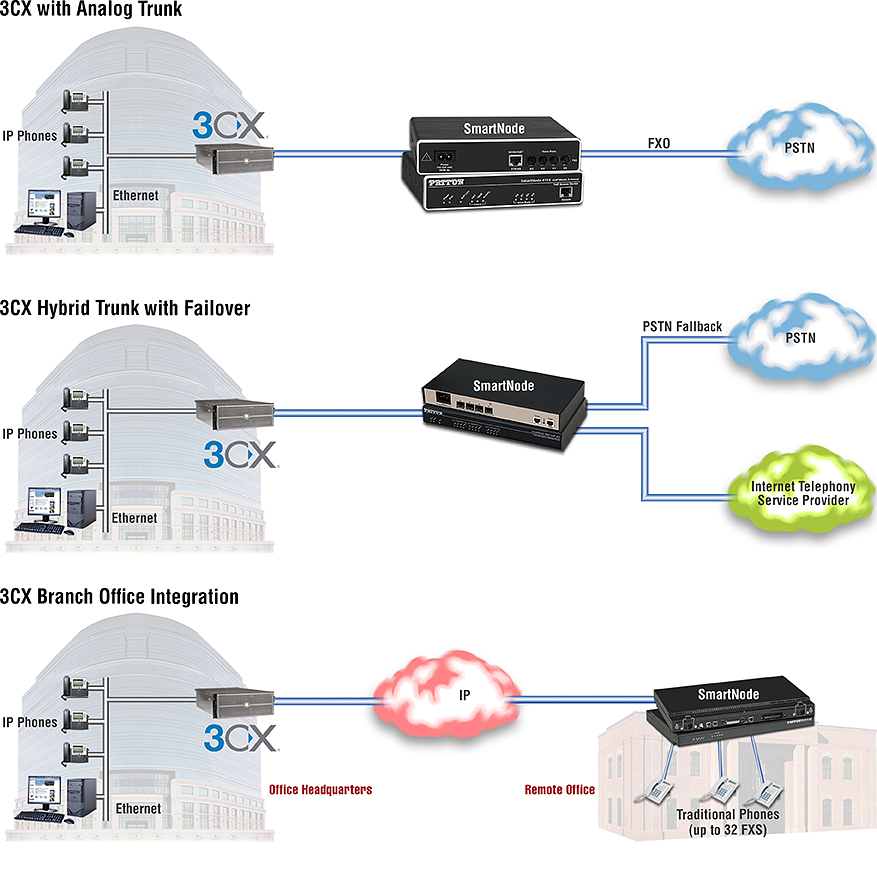The Details
SMBs are implementing the 3CX Phone System for Windows because it offers many benefits including robust UC feature sets, low cost, easy management, scalability and enhanced worker productivity. When deployed as an on-premise solution, SMEs can avoid the recurring costs associated with Cloud-Based services.
When planning for the transition, some SMEs realized they are locked into a service contract with their traditional provider of Analog, T1 or ISDN lines. The timing of the PBX replacement decision might be inconvenient and not aligned.
Many SME customers are still wary about going "All-IP" and switching to SIP Trunks, at least "right now". POTS lines work no-matter what, even when there is a power outage. An old fashioned analog phone connected to a POTS line will always work, no matter what. Besides, changing the PBX is a big task and bringing on a new unfamiliar VoIP trunking provider at the same time has risks and can complicate the migration.
SMBs often choose to make the transition in steps and sometimes they want to keep a few traditional trunks installed for survivability, in case their broadband to the internet fails.
For many businesses, it also may be advantageous to keep using legacy (analog or ISDN) end points (telephones, fax machines, overhead paging speakers etc.)
Patton's SmartNodes give SMBs and Corporate branches the ability to use existing traditional Analog, T1 and ISDN trunks with 3CX. The same devices can also terminate a SIP trunk, either at the time of transition or in a dual-trunking scenario, where the old trunk is used for failover survivability. Model as also available that allow both trunk and legacy device connectivity, so you can keep that FAX or Paging systems in place and working together with the 3CX system. And when you are ready to jump to the Cloud or integrate with Cloud based conferencing systems, SmartNodes supports that too.


